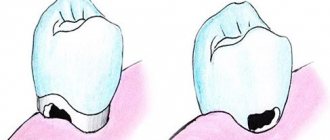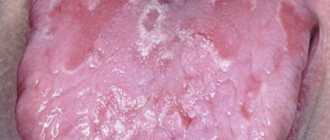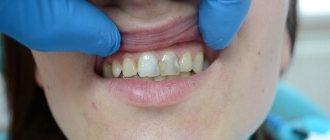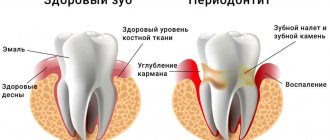- Questions and answers
- Stock
- Reviews
| Prices | Is it important to treat childhood caries? | Symptoms | Stages of caries | Treatment methods |
Caries of primary and permanent teeth occurs in 70-80% of children. This is due to the fact that children do not take good care of their oral hygiene and are partial to sweets. Do I need to treat the first teeth that will have to be removed anyway? What treatment methods are used in dentistry? How much does it cost to treat caries in children at the NovaDent clinic?
Prices
| Baby teeth | Price |
| Treatment of milk caries with placement of a filling made of glass ionomer cement | 2 350 ₽ |
| Treatment of caries with light polymerization fillings | 3 500 ₽ |
| Treatment of initial and superficial caries with Icon | 3 500 ₽ |
| Baby teeth | Price |
| Treatment of caries with filling made of glass ionomer cement | 2 350 ₽ |
| Treatment of caries with light polymerization fillings | 3 500 ₽ |
| Treatment of initial and superficial caries with Icon | 3 500 ₽ |
| Permanent teeth | Price |
| Temporary filling | 300 ₽ |
| Medical pad | 550 ₽ |
| Treatment of caries with placement of a light polymerization filling (anesthesia, cavity formation, antiseptic treatment, filling) | 2500 – 4 500₽ |
| Tooth restoration | 5 500 ₽ |
| Permanent teeth | Price |
| Temporary filling | 300 ₽ |
| Medical pad | 550 ₽ |
| Treatment of caries with placement of a light polymerization filling (anesthesia, cavity formation, antiseptic treatment, filling) | 2500 – 4 500 ₽ |
| Tooth restoration | 5 500 ₽ |
You can make an appointment with a pediatric therapist by multi-line phone or online on the website.
In our center, pediatric dentistry operates in the following clinics:
- Bratislavskaya, VDNKh, Verkhniye Likhobory, Krasnogorsk, Oktyabrskoye Pole, Petrovsko-Razumovskaya, Skhodnenskaya
Why is it necessary to treat childhood caries promptly?
- Deep dental caries in children can provoke dangerous complications, pulpitis and periodontitis, acute pain and loss of a dental unit. And due to the fact that young children are not able to tolerate pain, treatment of the disease in an advanced stage must be carried out under general anesthesia or sedation.
- The rudiments of permanent units are located under the milk ones. Serious infections and early removal of primary teeth can lead to dental problems in adulthood.
- Dairy milk is more porous in its structure, so caries in children progresses faster. If treatment is not started on time, after 3-6 months a small carious spot can lead to deep caries and pulpitis.
To detect the disease at an early stage, visit the pediatric dentist once every 3-4 months.
Causes of childhood caries
Since the immunity and tooth enamel in children are weaker than in adults, caries appears more often in childhood. But in general, the factors that cause the disease are the same in children and adults:
- Poor oral hygiene. Food debris that remains in the interdental spaces is an excellent environment for the development of cariogenic microbes.
- Failure in metabolic processes. If the enamel does not receive enough nutrients, it becomes weak and it is more difficult for it to cope with bacteria.
- Genetics.
- Poor nutrition. Children eat a lot of sweets, and this is the most important source of food for carious bacteria.
- Dysfunction of the salivary glands. With the help of saliva, bacteria are washed out of the oral cavity, and their waste products are also neutralized. If saliva is not produced in sufficient quantities, the colony of bacteria in the mouth becomes larger.
- Taking certain medications. Certain medications can affect the levels of fluoride and calcium, which are needed for strong enamel.
Symptoms of the disease
A child cannot always point out the source of pain and discomfort, so parents need to be especially attentive to their child’s behavior and monitor the condition of the oral cavity. The following symptoms should alert you:
- Refusal to eat, tearfulness while eating;
- Chewing food on only one side of the jaw;
- Painful sensations from hot, cold and sweet;
- Yellow or white spots, dark streaks on tooth enamel;
- Bad breath.
If you observe one or more of the signs listed above in your child, contact your dentist immediately.
Stages of caries
There are 4 stages of caries in primary teeth.
Elementary
– the stage of a carious stain is characterized by softening and demineralization of the enamel. The tooth surface loses its uniformity and becomes rough with white or light brown inclusions. At this stage, caries is asymptomatic.
Surface
– the destruction of the outer shell of the tooth continues, the shade of the enamel deteriorates, the nerve begins to react to temperature stimuli, sweet foods and drinks.
Average
– bacteria penetrate into the inner layers of the tooth, and the upper layers of dentin begin to deteriorate. At this stage, the carious cavity is clearly visible. Sensitivity to hot, cold and sweets increases.
Deep
– the infection spreads and affects an increasing proportion of dentin. At this stage of the disease, the risk of complications increases, including tooth loss.
Deep caries
The enamel and most of the dentin are affected. With deep caries, short-term, more pronounced pain from all types of irritants is noted. It can be disturbing that food gets into the carious cavity, which immediately leads to severe pain.
Features of the development of caries in children
Caries in children at different ages occurs differently. Its course is influenced by anatomical and physiological characteristics, the general resistance of the child’s body, as well as the high reactive properties of childhood. Let us consider the features of the development and forms of caries in childhood.
1. Caries in baby teeth develops unnoticed, but much faster than in permanent teeth. Especially after the child has been ill with something and if antibiotics were prescribed during treatment. Unlike permanent teeth, the resistance of baby teeth to carious factors is much lower - this is due to their structural features. Firstly, the enamel is low-mineralized, secondly, the dentinal tubules are wider and shorter than in permanent teeth, and thirdly, the low activity of the pulp plays a certain role. Consequently, in childhood, the carious process develops very quickly from initial forms to complications in the form of pulpitis and periodontitis. Moreover, the occurrence of caries complications can occur asymptomatically, due to the spread of infection through wide dentinal tubules, therefore, to make an accurate diagnosis, a mandatory visual examination is required before starting treatment to avoid diagnostic errors. Therefore, it is very important to contact a specialist at the first suspicion of caries, and not wait for the moment when severe and unbearable pain appears, because This will prevent complications in the future and preserve the child’s teeth. It should be noted: if parents do notice a carious cavity at home, then this is, as a rule, at least deep caries!
2. Children are characterized by multiple dental lesions (all 20 baby teeth may be affected). In this case, all surfaces of the teeth are affected, in a short time the crowns are completely destroyed, the pulp dies, and only the roots remain in the jaw. The defeat occurs sequentially and spreads to all teeth soon after eruption, and by 3-4 years the child is left without teeth;
3. In young children (up to one and a half to two years), caries usually affects the entire surface of the front teeth of the upper jaw. This is the so-called “milk bottle caries”. It develops in babies who are bottle-fed at night or use a bottle as a sedative to put the baby to sleep. The liquid in the bottle may contain easily fermentable carbohydrates, even if we are talking about milk, juices, and sweet sour-milk products. In addition, “milk bottle caries” occurs with indiscriminate and prolonged breastfeeding. In addition, during sleep, the process of salivation sharply decreases, therefore, the natural self-cleaning of the oral cavity becomes more difficult. Under these conditions, the carious process affects almost the entire surface of the front teeth, the enamel of which is still immature and fragile.
4. In children two to three years old, caries forms in the fissures, i.e. in the depressions (grooves, dimples) on the chewing surface of the tooth. Food remains are retained in the fissures. If they are narrow and deep, then self-cleaning does not occur in them. You can't even clean them with a brush. Gradually, microorganisms that produce acid begin to multiply in the fissure. It is harmful to teeth. First, the acid dissolves the surface layer of enamel - so-called initial caries or caries in the stain stage occurs. It can only be seen by a doctor at an appointment. At this stage, tooth decay can be prevented. If you delay treatment, then caries will penetrate deeper into the tooth, first affecting the enamel, then the dentin. As a result, caries becomes superficial, then medium and deep.
5. In children over three years of age, caries can also appear on the contact surfaces of the teeth, i.e. in areas of greatest retention of food residues that are difficult to reach with a toothbrush.
What methods of treatment of caries of primary teeth do we use?
The choice of treatment method depends on the depth, location, duration of the carious process, and the psychological preparation of the child. The latest methods of pain relief (including computer-aided administration of anesthetics) and modern dental equipment make it possible to completely eliminate pain during dental treatment, and advanced methods of caries treatment reduce the need for using drills to a minimum.
The combination of modern technologies and techniques ensures dental procedures are performed with maximum comfort and safety for patients. Trust the doctor’s experience and together with him choose the best way to treat caries in your child.
Features of caries treatment in children
The dentist must treat small patients with care and choose the most gentle and painless treatment possible. In dental therapy for children, the doctor follows the following rules:
- The duration of the appointment is no more than 30 minutes
. - , application anesthesia
is mainly used , less often - infiltration anesthesia (injection). For pain relief, the same drugs are used as for adults, only in smaller doses. - Treatment of caries in young children is carried out without drilling
using gentle methods: fluoridation and the infiltration method (with the drug Icon). - To remove deep caries in children under 3 years of age, filling with glass ionomer cement or photopolymer composite is used, usually under general anesthesia or sedation.
How to treat caries in a child
The method of treating caries in children is determined by the stage of the disease. If it is detected at the very beginning, silvering, remineralization or ozone therapy is prescribed.
Silvering is a minimally invasive and painless method of treating caries, which consists of applying a silver solution with a cotton swab to the surface of a tooth affected by caries. The silver composition has an antibacterial effect and is good at destroying cariogenic microbes. This method has a significant drawback. After silvering, tooth enamel darkens without the ability to restore its natural shade. You'll have to wait for the molars to grow in.
Remineralization is a procedure for saturating enamel with minerals. The method is effective at the stage of a white spot, onto which compositions with calcium, magnesium and phosphorus are applied. Several sessions are required to completely restore the surface of the tooth. In order to quickly introduce microelements into the enamel, ultrasound, electrophoresis or vacuum are used.
Ozone therapy is one of the most modern methods of caries treatment, in which ozone is applied to the tooth through a small silicone cup. It sterilizes the carious cavity. This procedure, which lasts only a few minutes, ends with remineralization.
Treatment methods for caries of primary teeth
Initial and superficial caries of baby teeth can be treated without a drill. In young children, carious stains on tooth enamel are effectively removed by infiltration using the unique German Icon technology. Fluoridation is also widely used.
Treatment without drilling with Icon
The technique consists of applying a special paste to a previously dried surface, which restores the enamel and stops the development of caries. Icon is completely painless and does not require anesthesia.
Indications:
usually carried out 6 months after the complete eruption of a particular tooth, suitable for children over 2 years old.
Fluoridation
Treatment of the tooth surface with fluoride-containing pastes with calcium, which restore enamel. Remineralization is an effective, painless and absolutely safe procedure. Thanks to fluoridation of children's teeth, the enamel layer becomes denser and less vulnerable to the negative effects of bacteria and acids, which cause dental caries.
Indications:
used from an age when the child is able not to swallow the medicinal solution.
Fissure sealing
The essence of the method is filling grooves and tubercles on the tooth surface with special fluorine-containing materials. The technique protects against the penetration of pathogenic bacteria into the tooth and reduces the likelihood of caries by 90%. Fissure sealing is carried out in two ways: invasive and non-invasive.
Indications:
It is advisable to carry out no later than 2.5-3 years.
Important:
All treatment procedures are carried out only after professional cleaning of baby teeth.
Read more about the treatment of baby teeth.
Treatment of caries of permanent teeth in children
At the initial stage, caries of permanent teeth can also be cured without drilling or preparation. The same methods are used as in the treatment of primary teeth. Sealing the fissures of molar teeth is recommended as the most effective prevention of caries.
Filling is the main method of treating permanent teeth in children. Filling technology for children is practically no different from therapy for adults. For restoration in this case, photopolymer composites of the latest generation are more often used.
The permanent tooth is filled according to the following scheme:
- Preparation, cleaning of carious cavity;
- Treatment with an antiseptic drug;
- Restoration with photopolymer composite;
- Polishing and grinding of the filling.
Tooth restoration is carried out under local anesthesia. Doses are selected individually depending on the age of the child.
Prevention
Prevention of caries in primary teeth includes a set of measures aimed at reducing the susceptibility of teeth to carious lesions. The basis of prevention is a proper diet, good oral hygiene and regular dental examinations. In the first years of life, parents are entirely responsible for hygiene. It is important to carefully monitor the condition of your mouth and clean it thoroughly after each meal. As soon as the baby teethes, parents should maintain hygiene with the help of special soft brushes. At the age of 1.5–2 years, the child begins to be taught independent oral care. Depending on the age of the child, a toothbrush and special toothpastes are selected. For older children, dentists recommend the use of additional hygiene products: dental floss, mouthwash.
The diet deserves special attention. To reduce your risk of developing tooth decay, you should limit your intake of sweets and carbohydrate-rich foods as much as possible, especially as snacks. A good prevention is to replace such foods with hard vegetables and fruits, as they perfectly clean teeth from plaque. To keep your teeth strong and healthy, you should add foods rich in fluoride and calcium (fermented milk products, cottage cheese, cheese, fish) to your diet.
Parents should instill a culture of oral hygiene in their child from an early age, teach them to brush their teeth regularly and correctly, and develop a positive attitude towards visiting the dentist.
Special offer
Participate in the promotion
Promotion “1+1”: child and parent
You have entrusted NovaDent with the treatment of your child’s teeth, as a token of gratitude we are giving you a free consultation with any specialist (surgeon, implantologist, therapist, orthodontist, hygienist), as well as an orthopantomogram (panoramic photograph of the teeth) sent by email.
Take time for your health and take advantage of this great offer! Participate in the promotion
Expert of the article you are reading: Lapshina Maria Aleksandrovna Dentist, pediatrician
21 years
Clinical experience
Krasnogorsk
Moscow region, Krasnogorsk, Podmoskovny Boulevard, 5
+7
Free consultation with this specialist










